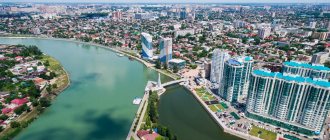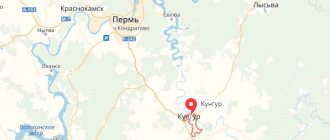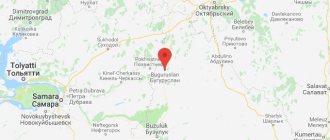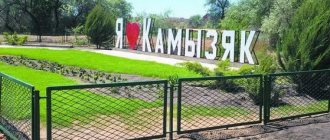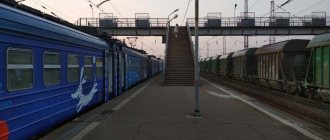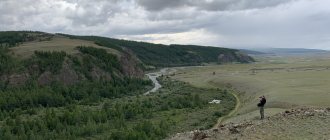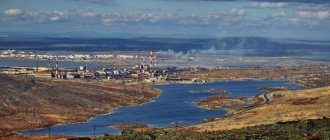The city of Grozny is the capital of Chechnya. Its name comes from the fortress of the same name, founded in 1818. The fortification received this name because at that time the area surrounding it was the hottest and most tense point in the North Caucasus. Subsequently, a city grew around the fortress. Its date of formation is considered to be December 30, 1869. What is the capital of Chechnya? Its appearance and internal politics are described in the article.
The formation of Grozny
The indigenous residents of Grozny themselves do not call it that. The more common name is “Sunzha City”, which in translation from the Chechen language means “formidable”. It was formed thanks to the river with the same name, on which the fortress of the same name was once founded. Therefore, to answer the question of why the capital of Chechnya is called Grozny, it is enough to mention this building.
At the very beginning of the 19th century, there was talk of moving the capital of Chechnya from Grozny to another, less destroyed city. But Akhmat Kadyrov, who is the head of state, categorically opposed this. He justified his protest by the fact that there are too many historical events associated with the city for it to be so simple and painless to remove its status as the capital of the Chechen Republic.
History of the city of Grozny (Soylzha Giala)
The city of Grozny has a glorious history. In the 19th century Grozny was not only the administrative center of the Chechen district, but also the largest industrial center in the North Caucasus, a center of oil production and refining, and later the capital of the Chechen-Ingush Autonomous Soviet Socialist Republic.
Grozny is also the center of formation of the Chechen ethnic group, where the ancestors of the Chechens lived from ancient times. The valley of the middle reaches of the Sunzha River, in which the city of Grozny is located, has been attractive for habitation since ancient times. The most ancient archaeological sites known today on the current territory of the city date back to the Early Bronze Age - the 3rd millennium BC. They are located mainly in the Zavodsky district of Grozny. The earliest domestic monuments - habitats of ancient people - have been identified in several places in the current urban area. These are groups of Khankala settlements and settlements located on the slopes of Mount Suir-Kort (Oktyabrsky district), Chernorechenskoye settlement and the settlement - “G1alii Barz” (Zavodskoy district, Chernorechye village). The Starosunzhenskoe settlement is widely known in the archaeological world. Among these monuments, the most famous are the 2nd Khankala settlement of the Early Iron Age, next to which a Sarmatian burial ground and the well-fortified 1st Khankala settlement were excavated. In total, more than 30 archaeological sites are known on the territory of the city of Grozny. It is possible that the ancient settlement was located on the site of the original foundation of the Grozny fortress. These monuments date back to the 1st millennium BC - the beginning of our era.
In the 1st millennium AD and during the Middle Ages, large cities were located in the basin of the Terek and Sunzha rivers, which, however, are localized ambiguously by local historians. The ancient Russian chronicles and the chronicles of Georgia (Kartlis Tskhovrebe) mention large cities: Dedyakov (Elkhotov Gate), Magas (Alkhan-Yurt village) and Sudzha (Grozny district). It is known that in 1268, the son of Vladimir Prince Andrei Bogolyubsky, who was killed during a conspiracy, fled to the relatives of his Yasynka mother in the city of Sudzha.
From the beginning of the 13th century, the entire flat territory of Chechnya, like the entire North Caucasus, came under the rule of the Golden Horde. The North Caucasian ulus with its center in Tatartupa (Elkhotov Gate) became the main ulus of the Horde. Already in the 14th century, large cities with a diverse population flourished here and caravan routes passed through.
In 1395, the area at the confluence of the Sunzha River with the Terek (Ilyinskaya station) became the site of a clash between two powerful armies and commanders: Tokhtamysh and Tamerlane (Timur). After the defeat of the Golden Horde, Timur's hordes devastated the rich cities of the lowland part of the North Caucasus.
The entire population of Chechnya, offering fierce resistance to Timur, went into the mountains. Timur's troops combed the gorges and besieged those who had taken refuge in the towers. The economy and population of the region suffered serious damage. After the death of Timur in 1405, his power collapsed, but the region of Terek and Sunzha remained for a long time a place of campaigns and nomads of the Borgan and Nogai tribes.
At the end of the 14th century. The North Caucasus became the arena of Timur's struggle with the Golden Horde Khan Tokhtamysh. In 1395–1396 Timur raided the Caspian regions of the Golden Horde because Tokhtamysh made a campaign in 1386 through Derbent to Eastern Transcaucasia.
Timur destroyed the troops of Tokhtamysh on the Terek in 1395 and began to systematically capture the region. He ravaged the lands of modern Chechnya and Ingushetia, took Derbent, then captured the territories of Kaitag, Zirikhgeran, Gumik, Avaria, Kumyk lands between the Terek and Sulak rivers
Timur's troops dispersed in separate detachments in the gorges and moved through the mountains from west to east, capturing and destroying fortresses and castles along the way, located mainly in the mountainous part of modern Nazran, Sunzhensky, Achkhoy-Martan and Sovetsky regions.
After the fighting in the Argun Gorge, Timur’s troops turned to the northeast and went deep into the forest zone of the current Vedeno and Nozhai-Yurt regions up to the Andean ridge.
Timur’s desire to deal with the rebellious mountaineers was so great that, on his orders, the army fought to climb into places from which “neither horse nor foot could descend, but had to push off and slide down.” Emphasizing the extraordinary strength of resistance of the population of the territory of Chechnya, the fierceness of the fighting in the most difficult mountain conditions, the court chroniclers of the conqueror wrote with trepidation that the ruler Timur himself “was subjected to these horrors and dangers.”
In the second half of the 16th century, the lowland part of Chechnya began to be developed by the Chechens, first in the river basin. Argun, and then r. Chechen settlements arose again in Sunzhi, the names of which are reflected in toponymy.
The first documented trade, economic and political relations between Chechens and Russians date back to the second half of the 16th century. The Chechens had very close ties with the Cossacks and the tsar’s “service people”, who created various settlements on the Terek and Sunzha - “fortresses”, “towns”, “settlements”. Often Chechens and Russians lived together in these settlements. They fought together against the Crimean Tatars (vassals of Turkey) and Iranian invaders.
From the second half of the 16th century, the Osman Road, which ran from Crimea to Iran, became of utmost importance in trade and economic relations between Russia, the peoples of the Caucasus and the countries of the East. The most important strategic point of this trade route was the Sunzhensky (or “Osmanov”) transportation - the crossing of the Sunzha River, which, judging by all the descriptions, was located on the site of the modern city of Grozny. It became the most important junction of trade roads in the North Caucasus, which it remained until the end of the 17th century. As a result, the area of modern Grozny, inhabited by Chechens, became by the end of the 16th century. the most important and strategic center of trade, economic and political life in Chechnya.
Shikh-Murza Okotsky is one of the significant Chechen political figures of the 16th century. The activities of Shikh-Murza objectively led to the strengthening of the influence of the Russian state in the Caucasus.
Shikh Murza Okotsky is the leader of the Akkins, one of the first to establish relations with the Russian Tsar. After the Tatar-Mongol invasion, the migration of Chechens began from the mountainous regions of Chechnya to the east, including the Akkins, known in sources as Okochans. Shikh-Murza was the most influential in the town of Terki, built by the Russians. He had up to 500 people under his command.
In 1588 A delegation from among the Caucasians came to the Russian Tsar Fyodor Ivanovich. The Chechens were represented by Bayto, Shikh-Murza's nephew. Shikh-Murza led military operations against his neighbors with the support of the Russian Tsar. In 1589 Shikh-Murza Okotsky writes to Moscow that he has captured the town of Enderi and seven other towns.
Shikh-Murza's influence in the region can be judged by the fact that he ensured safe passage to and from Georgia for embassy delegations. Thanks to Shikh-Murza, the city of Terki remained the southern outpost of Russia.
Subsequent events of the “Time of Troubles” lead to the loss of Russian activity in the Caucasus for almost half a century and the loss of positions of pro-Russian forces in the Chechen environment. Since the second half of the 17th century, due to the lack of land resources and overpopulation of the mountains, there has been an active wave of resettlement (reconquista) of Chechen societies to the plain and the development of the Sunzha River basin. On the left bank of the Sunzha River, in its middle reaches, more than 70 Chechen villages are known, and within the modern borders of the city of Grozny, about 40 such settlements, hamlets and settlements appeared. In Russian documents of the 18th century they are listed as the possessions of the Chechen families of the Aydemirovs, Turlovs, and Kazbulatovs. The largest among them were the villages of Aldy and Soilzha, numbering from 500 to 700 households. According to documents from the mid-18th century. The village of Aldy was located in Chernorechye and was practically adjacent to the Khankala settlement. The time of its origin is not precisely established, but already in documents of 1720 on the river. The town of Buyuk-Kent (identified with Bugun-Yurt), which was part of the Alda society, is mentioned in Sunzha. In 1732, the “Register of Mountain Owners” indicated the settlement of Alda. The village of Aldy is widely known in the history of the North Caucasus as the center of the movement of Imam Mansur; Alexander Chechensky, one of the heroes of the Patriotic War of 1812, came from this village.
It can be said with some certainty that the village of Aldy was formed by the descendants of the people who at one time created the Khankala settlements. Thus, it is obvious that the territory now included in the city limits of Grozny was densely populated by Chechens.
During the reign of Catherine II and Alexander I there was a sharp increase in the military power of Russia. After the Russian-Turkish War of 1768-1772, the Ottoman Empire abandoned its patronage of the mountain peoples of the North Caucasus, and Russia gradually switched to methods of military enslavement and oppression, and later repression of the mountain population.
After Georgia came under Russian protectorate (Treaty of Georgievsk), the conquest of the North Caucasus became a military necessity. The practice of building fortresses with big names begins: Groznaya, Sudden, Stormy.
In June 1818, not far from Chechen villages, on an empty section of the left bank of the river. Sunzhi, opposite the strategic Khankala pass, construction of the Grozny fortress began, which was completed only three years later. By order of the proconsul of the Caucasus Ermolov, troops under the command of General Velyaminov in October 1818 destroyed the village of Staraya Sunzha (Soilzha-Yurt) and expanded the fortress buildings at the expense of the destroyed village. The surrounding villages were hastily abandoned by their inhabitants, who went closer to the Chechen mountains.
Grozny later began to grow on the territory of villages abandoned by the Chechens. The fortress, built for strategic purposes, is gradually turning from a military-administrative center into a place of vibrant economic and trade relations. It is overgrown with a suburb from the western part, and a settlement is formed from the south by retired soldiers, which later became a village. In the northern part, a settlement of mountain Jews was formed and by the middle of the 19th century, from a distance it looked more like a village. In 1860, the Caucasian governor, Prince Baryatinsky, ordered to hold two fairs - autumn and spring. On the right side of the Sunzha River, Chechen villages have been revived.
In 1870, by decree of the Senate, the Grozny fortress received city status. He is provided with rights and benefits for a period of 5 years, and migrants from the central regions of Russia and the Don flock here.
On December 30, 1869 (January 11, 1870 according to the new style), the city of Grozny was established by decree of the Senate. Two settlements located on both sides of the Sunzha River, numbering about 4 thousand inhabitants at that time, were united. The decree was published on February 3, 1870, and the “Regulations on the city of Grozny,” in which its residents (to attract the population) were provided with a number of benefits, was approved by the governor of the Caucasus on November 6. On January 1, 1871, a new administrative structure of the Terek region was put into effect. “From now on,” the circular said, the Grozny fortress is renamed a city with the introduction of simplified public administration.”
From 1874 to 1876 in Grozny, the number of traders doubled, the number of artisans quadrupled, and the number of workers at industrial enterprises doubled. The number of traders grew rapidly. Already in 1896, there were 323 trading establishments in the city with a trade turnover of about 2.5 million rubles. Many of the Chechen capitalists had large fortunes.
By the end of the 19th century, a large center was founded in Chechnya - the Grozny oil-industrial region. The development of oil production and oil refining accelerated with the start of railroad construction. In 1893, a railway line was built connecting Grozny with Port Petrovsk (now Makhachkala) and Rostov-on-Don.
In April 1895, along the railway connecting Grozny and Port Petrovsk (Makhachkala), construction began simultaneously on three buildings built in 1893 by oil industrialist Faniev for the production of oil equipment. Until 1917 it was called simply, since 1920 - “Red Hammer”.
November 10, 1895 The kerosene plant was put into operation, which became the founder of the Grozny Oil Refinery named after. IN AND. Lenin. Iosif Avetovich Akhverdov is a Vladikavkaz lawyer and entrepreneur who was the first to lay the first drilling wells in Grozny, instead of the primitive oil wells that existed at that time. The plant was built by an English company.
The largest oil monopolies in Grozny at the beginning of the twentieth century. were (ARMO), oil industry company "Shpis", "North Caucasian Society", "Kazbek Syndicate", "Partnership N.A. Akhverdov and Co.,” “The Nobel Brothers” are the famous founders of the Nobel Prize.
In 1912, Shell acquired 90% of the shares of the main Rothschild enterprise in Russia. In Grozny, the Rothschild group previously included Russian Standard. After Rothschild actually left the Russian oil industry, it merged with Russian Standard and Russian Grozny Standard was formed - the largest in Russia. At the beginning of 1912, the seventh oil refinery was launched in Grozny. The plant was built by Bellik and Isakovich, but soon it became owned by Nobel.
By 1914, the influence of British capital in Grozny had increased: these companies already owned 72% of oil-bearing lands and 63% of drilling wells. The monopolies managed to attract huge capital: by 1914, investment in the Grozny oil industry amounted to 82.2 million rubles, of which 52% came from foreign investors.
The oil boom caused rapid growth of the city. The population increased mainly due to Russian settlers - professional workers.
In 1913, forty-five thousand residents lived in Grozny, of which twenty thousand were workers, including three thousand Chechens. There were more than 40 factories in the city - 27 brick factories, 11 leather factories, two each for lime and candle factories, etc.
In 1917, the Grozny industries reached their highest level of development: 1 million 770 thousand tons per year or 22% of all production in Russia.
During the civil war and 100-day battles in Grozny, all industries were destroyed. For their successful restoration, Grozny was awarded the Order of the Red Banner in 1924.
In the twentieth century, the planned development of the city began, its main areas associated with the development of oil fields - Staropromyslovsky, Novopromyslovsky (Oktyabrsky) and oil refining - Zavodskoy district were formed. The central part of the city, together with the growing microdistricts, formed the Leninsky district.
On November 30, 1922, Grozny became the center of the Chechen Autonomous Region. Since 1934, the center of the Chechen-Ingush region, transformed in 1936 into the Chechen-Ingush Autonomous Soviet Socialist Republic with its center in Grozny.
By the beginning of the Great Patriotic War, the leading sector of the economy of the Chechen Autonomous Soviet Socialist Republic was oil production and refining. The war presented new demands to the Grozny oil industry. Together with other plants in the country, Grozneftekombinat was called upon to provide the country and the front with high-quality gasoline and other petroleum products. Military equipment needed new, high-octane grades of fuel and appropriate lubricating oils. This task in the republic was solved on the basis of the general rise of the oil industry.
Hitler in July 1942 directly stated that “if he does not receive the oil of Maikop and Grozny, then he will have to end this war.” The seizure of the Caucasian fields, and above all Grozny, would have allowed, on the one hand, Hitler to successfully wage a long war, and on the other, would have undermined the combat effectiveness of the Red Army.
Therefore, the main group of the German army rushed through Rostov-on-Don to the Kuban and the Caucasus, targeting the oil fields of Grozny with subsequent access to Baku.
The city received the status of a special defensive region. A system of fortifications was created around the city, which in some directions included up to six defensive lines. Grozny was placed under martial law. Around the city, 54 old defensive structures were restored and 981 new ones were built. 130 thousand m³ of timber, 19 thousand tons of cement, 14.5 thousand tons of iron, 830 tons of barbed wire, and more than 9 million man-days were spent on their construction.
In tank-hazardous areas, 9 km long shafts of oil-soaked straw were built. 1 million m² of territory was filled with a flammable mixture.
The ditches and approaches to them were covered with pillboxes, bunkers, machine gun and artillery firing points, which were covered with reinforced concrete caps.
Workers of machine-building and metalworking factories produced thousands of steel anti-tank “hedgehogs”, south of Malgobek, right under the fire of long-range enemy artillery and the bombing of Nazi aircraft, thousands of collective farmers, together with Grozny residents, built trenches, scarps, and anti-tank ditches. At the time of the fierce attacks of German tank formations trying to break through to Grozny, fire brigades filled 28 kilometers of anti-tank ditches with oil, soaked 9 kilometers of a straw rampart with oil, and filled with oil places where tanks could pass through 1 million square meters. meters and pumped 7,000 cubic meters of water into anti-tank ditches.
In the summer of 1942, when the situation at the front became very tense and Grozny found itself almost in the zone of hostilities.
Enemy air raids on Grozny became more frequent from August 1942 and subsequently intensified day by day. Initially, hoping to capture the wealth of Grozny unharmed, the enemy limited himself to reconnaissance flights and bombing of railways and stations near the front.
Convinced of the hopelessness of their attempts to break through to Grozny in order to capture it safe and sound, the Nazis began massive bombing of the city in October 1942. An armada of Junkers-88s, consisting of two hundred aircraft, flew into the city from the south. Heading towards the Zavodskoy (Stalingrad) district, along the way the Junkers dropped high-explosive and incendiary bombs on the city, trying to hit objects that they considered suspicious.
For participation in the defense of Grozny in 1941-1942. and military affairs on the approaches to it, more than 80 thousand Grozny residents were awarded medals “For the Defense of the Caucasus.” Some defenders were awarded the high titles of Heroes of the Soviet Union and Heroes of Socialist Labor. A monument to firefighters who fought a large-scale fire in those days was erected in the Zavodskoy district, with the names of the victims carved on it.
In 1973 The Grozneft association produced 18 million tons of oil.
By 1986, more than 30 mechanical engineering and metalworking enterprises operated in the republic. In addition to the reconstruction of existing enterprises, a number of large machine-building plants were built. Development priorities were petroleum engineering, electrical instrument making and the production of medical instruments.
Large enterprises of various industries were concentrated in the capital of the Chechen Autonomous Soviet Socialist Republic: the Grozny cannery, a wine and cognac factory, and a pasta factory. The Grozny shoe factory produced 2 million pairs of shoes per year.
In the USSR and the countries of the socialist camp, machines, installations and other products from such large Grozny companies as Elektropribor, Avtospetsoborudovanie, Transmash, the Druzhba cardboard factory, and the Terek furniture factory were used in various branches of industry and agriculture.
In 1990, 12 consolidated industries were represented in the Chechen Autonomous Soviet Socialist Republic with varying degrees of completeness. Along with the oil production and oil refining industries, the energy, mechanical engineering, petrochemical, woodworking, light and food industries, and the construction industry were developed.
In the 90s, the enterprises' products were exported to more than 30 countries. Grozny paraffin was purchased by the Vatican.
In 1990, the city's population was 401 thousand people.
Grozny ranked second, after Rostov-on-Don, in industrial power and third in population after Rostov-on-Don and Krasnodar.
Grozny provided 54% of all industrial output of the former Chechen Autonomous Soviet Socialist Republic.
At the end of the 80s. In the twentieth century, Grozny was one of the industrial, cultural and scientific centers of the North Caucasus. Its population reached 383.5 thousand people. 60 industrial enterprises operated here. The housing stock amounted to 5 million square meters of total usable area.
In Grozny there were 3 universities, 9 secondary specialized educational institutions, 82 secondary schools, 30 technical schools, 11 research institutions, a modern television center, 3 theaters, a philharmonic society, two museums, dozens of libraries, cinemas, houses of culture, the Palace of Pioneers, 34 medical institutions that employed 1.5 thousand doctors and about 8 thousand secondary medical workers, 25 women's and children's clinics and clinics. Grozny Airport connected the capital of the Chechen Autonomous Soviet Socialist Republic with 35 cities of the USSR. Checheno-Ingushetia had developed mass media: in 1980, 4 republican, 14 city and regional, 8 large-circulation newspapers, 2 literary and artistic almanacs, a socio-political magazine were published, book and newspaper publishing houses operated. The printed circulation of the republic's newspaper products was approaching 4,000 thousand copies.
The well-known tragic events of the 90s destroyed the city to the ground, the central part was especially badly damaged. The infrastructure was completely absent; the life support system for people did not work. There were no basic living conditions for the population.
The question arose about the geographical transfer of the capital to another region of the republic.
Life in the Chechen capital in the early 2000s. can be characterized as a transition period from war to peace and the struggle for survival.
Thanks to the efforts of the First President of the Chechen Republic, Hero of Russia Akhmad-Hadji Kadyrov, the city began to come to life in its original place. Large-scale restoration of Grozny began at the end of 2004. Grozny turned into a huge construction site.
OH. Kadyrov made every effort to form executive authorities at all levels. The turning point in the implementation of the Russian legal model of government in the Chechen Republic was the referendum on the new Constitution of the Chechen Republic, which was successfully held in March 2003. According to official data, 89.48% of citizens included in the voting lists took part in the referendum. 95.37% of voters were in favor of adopting the new Constitution.
In 2007 R.A. Kadyrov holds the post of head of the Chechen Republic. It was under his leadership that peace was established in Chechnya and the city of Grozny was completely restored.
The scientific, educational and cultural infrastructure in Grozny was restored as soon as possible. Two scientific institutions: Academy of Sciences of the Chechen Republic, Complex Research Institute named after. H.I. Ibragimov RAS; higher state educational institutions - Chechen State University, Chechen State Pedagogical Institute, Grozny State Petroleum Technical University named after. Academician M.D. Millionshchikov, and also a new university was built - the Russian Islamic University named after. Kunta-Khadzhi Kishieva.
Theatres, concert halls, libraries, museums began operating: Chechen Drama Theater named after. Kh. Nuradilova, Russian Drama Theater named after M.Yu. Lermontov, Theater for Young Spectators, State Philharmonic named after. A. Shakhbulatov, Theater and Concert Hall, National Library of the Chechen Republic named after. A. Aidamirova, Republican Children's Library named after. S. Mikhalkova, Grozny City Library, Republican Specialized Library for the Blind. National Museum of the Chechen Republic, Memorial Complex "Walk of Fame" named after. A.A. Kadyrov.
In Grozny, state television and radio companies, sports facilities, song and dance ensembles “Vainakh”, “Nokhcho”, “Daimokhk”, “Bashlam” and others began operating.
Thanks to the titanic work of the entire population of the Republic, the serious support of the federal center, and the extraordinary organizational skills of the Head of the Chechen Republic Ramzan Akhmatovich Kadyrov, it was possible to restore the capital of the Chechen Republic, the city of Grozny, which was completely destroyed in a short period of time.
A sign of recognition of Grozny's success in building a peaceful life and sustainable development are the awards that Grozny has received. These are “The Best City of the CIS” (2008, 2009, 2011, 2012, Moscow), “The Best Municipal Formation of Russia” (2008, Moscow), an honorary diploma from the UN “Post-conflict reconstruction” (2009, Moscow). Washington).
The visiting cards of the Chechen capital are:
• Grozny International Airport;
• Cathedral Mosque “Heart of Chechnya” named after. A.A. Kadyrov (the largest in Europe);
• National Museum of the Chechen Republic;
• Memorial complex “Walk of Fame” and museum named after. A.A. Kadyrov;
• Sports complex named after. First President of the Chechen Republic A.A. Kadyrov;
• The Grozny City high-rise building complex in the city center;
• Central park complex;
• Central Republican Library;
• Buildings of OJSC Grozneftegaz.
The decoration of the city are its avenues: V.V. Putin, A.A. Kadyrov, Sheikh Ali Mitaev, etc.
Today, the capital of the Chechen Republic is a modern, well-maintained city with almost three hundred thousand people, with green squares and residential areas that have grown up on the site of former ruins, with excellently functioning social facilities.
Chechnya as a training ground
Major military operations took place on the territory of Chechnya twice. During the First Chechen War, Grozny was stormed, and the city was besieged from four sides. The conflict was caused by the fact that the government of the republic refused to take into account the requests of the President of the Russian Federation to resolve the events taking place in Chechnya. And there at that time groups of armed people were often observed carrying weapons without any permission. An attempt to negotiate also came to nothing. As a result, after the end of hostilities, the city of Grozny was taken under control by the troops of the Russian Federation.
Five years later, the capital of Chechnya was again attacked, and again the settlement was left under the control of Russian troops. This time the reason was that Islamists penetrated into Dagestan from the territory of Chechnya and carried out a series of terrorist attacks. The attack on Grozny was part of the Second Chechen War, which lasted from 1999 to 2000.
Transport in Grozny. How to get there?
The main difference between the transport connections of Grozny and the transport networks of all other Russian cities is that there is no international communication, but within the country you can get to almost any direction.
As for the city’s transport network itself, it is represented here only by buses and minibuses. Until 1994, both trams and trolleybuses ran in Grozny, but after the hostilities it was decided not to restore the electric transport line.
Climate
The climate in the city differs from the weather in Krasnodar, located at the same latitude. The winter here is colder due to strong northern winds. The air temperature in the cold season can drop to -20 degrees. The capital of Chechnya has quite long and hot summers. The thermometer often rises to 35 degrees, and this is in the shade! This difference in summer and winter temperatures can be explained by the fact that the city is located in a zone of temperate continental climate. Hence the interesting climatic conditions.
About transport
The idea of visiting Grozny had been in my head for a long time, but, as often happens, there were always other plans and other directions. Having immediately received a newsletter that you could fly there for 5,600 rubles with Utair airlines for the weekend (Fri-Sun), I decided that the time had come. And now, on the last weekend of April, I am already leaving the Northern airport in Grozny:
I always prefer to get from the airport to the city by public transport to immediately immerse myself in the atmosphere of the city, although taxis in Grozny cost very reasonable money. One evening it was raining heavily and in the dark I had no desire to get to the other end of the city on my own, so the trip cost 85 rubles (I ordered through the Maxim app). The public transport stop is located near the parking lot (landmark - parking meter), which is no more than 200 meters from the entrance. I needed minibus No. 111, which goes to the railway station, the fare cost 22 rubles.
As I understand it, minibuses are the main form of transport here, because all the times I traveled by public transport, they were the ones who arrived.
For some reason, the minibus from the airport that I was traveling on was less than halfway, and the driver suggested that everyone change to another one, and, of course, took money for the journey. I don’t know if it was just me who was so lucky or if it was supposed to be this way, but I decided to continue walking. I stayed quite far from the center (2.5 km) on Zhukovsky Street and I can say that while I was walking to the hotel, I probably saw the largest concentration of tire shops and car services per square meter. In principle, I can say the same about the concentration of domestic cars (in the neighboring city of Argun, Priors have even been assembled at the Chechenavto plant since 2011), and for some reason it seems to me that these facts are related. By the way, local services are always busy.
Religion
The main religion practiced in such a large center as the capital of Chechnya (photo included in the article) is Islam. It prevails throughout Chechnya. Several years ago, in 2009, a special complex for Muslims was formed. It is located in the very center of the city. There is also a huge mosque called the “Heart of Chechnya”. This grandiose building even has its own television channels and its own radio studio.
Christians are also present in Grozny. They are an Orthodox community. Not so long ago, in 2006, the Christian Church of the Archangel Michael was restored. In addition, the church is making efforts to revive the community of Baptist Christians.
Also in Grozny until 1930 there was an Armenian Church. It was located in the city center. But, unfortunately, it was demolished under Soviet rule. However, the reason for the demolition is not specified.
About the urban environment
When booking an overnight stay in a city, I often focus on the distance to the attractions that interest me. It was also in Grozny, I figured that 2.5 km is half an hour of walking at a normal pace, so I considered this distance acceptable. However, there is something I didn't take into account. Firstly, it was still spring and it was getting dark outside early, so we often had to walk in the dark for those half an hour. And no, walking around Grozny at night is not dangerous, but it’s just that in the part of the city through which my route lay, the lighting was very bad, and in some places I had to walk using my phone to illuminate my way. Secondly, the weather was a little let down and it rained all day on Saturday, but, as it turned out, the further from the center, the fewer not only asphalt sidewalks, but also sidewalks in general. As a result, a theoretical half-hour night walk around the city sometimes turned out to be an obstacle course. Photos on the Internet usually give an inaccurate impression of the city; in fact, most of Grozny appears to be private houses, although the houses here are very decent. As a local taxi driver told me, Chechens build housing for the whole large family and for a long time, so do everything on a large scale and thoroughly. Of the interesting details in the private sector, I noted for myself the methods of throwing away garbage. The bags are hung on special hooks near the road, then they are collected by a garbage truck passing along the street.
The central part of Grozny is strikingly different from its main part, and Putin Avenue can easily be confused with a street in some European town.
Here you can already find smart bike paths that automatically count the number of cyclists, bins for separate waste collection and benches with built-in solar panels and phone chargers:
Recently they even invited street artists to paint graffiti on buildings, some of which look really cool, but I found myself at a time when most of the work was still unfinished. Personally, I think the coolest image is the three-dimensional tower on Kadyrov Avenue.
In fact, walking along two avenues, you are surprised how cool everything is here, from parks to workout grounds and modern football “boxes” for children:
Only then do you go a couple of blocks to the side and don’t understand how to normally cross the bridge over the Sunzha if there are no sidewalks or they suddenly disappear.
Anthem of the Chechen Republic
Kharzono tse tight hiila hyo yagarkh, Nokhchiycho tsa yozhna, g1attina yakha Kavkazan tkes hila, marshonan aga, Khyan lattan siy dina yakh yolchu naha.
Bart bolu khian k'amnash - mah botsu berkat! Hyo yotsurg, Nana yats, nokhchiin halk khasta. Than dehar, than derzar Daimekhkan kherchakh, Dekaldar dokhush du, Dalla besh hastam.
Bashlaman bahkhashka dain sinosh dussu. Organa tulg1eno nenan mott buytsu. Isbakhya sovg1at hyo, azalleh della! Shatlakhan illi do thuna nitsk bellarg!
Kinkhyogam, khyan hyunarsh hazdella shayna, Khyalqatsa leram bar kha' hulda khyuna. Masharan g1arolekh irsan is a secret, Siy dolush Nokhchiycho ehiyla thuna!
Settlements
The valley of the middle reaches of the Sunzha has attracted people for a long time. Sites appear here at the beginning of the Bronze Age, in the 3rd century. BC e. They were located in the Zavodskoy district of present-day Grozny. The following settlements are known:
- Khankala, settling at the foot of the Suir-Court mountain range - today's Oktyabrsky district.
- Chernorechenskoe.
- Old Sunzhenskoe.
In total there are 30
archaeological finds.
Most likely, the oldest of them is in the 1st
century. BC e. coincides with the location of the fortified fort. From the 13th century The region falls under the control of the Golden Horde. The ulus in Tatartupa, the Elkhotov Gate, occupies a leading position in it. In the next century, multinational villages appeared here and caravan routes were established.
Gaining urban status
IN 1860
The governor, Prince Baryatinsky, organizes fairs in the fall and spring.
On the very eve of 1870,
by decree of the Senate, the fortified area was transformed into Grozny.
5
years, settlers receive free plots of land of
400
square fathoms for development. Due to the large quantities of oil reserves found, their number is rapidly increasing.
In XX
V.
mining of “black gold” attracts the attention of domestic and foreign entrepreneurs and concessions. Business people arriving from England, Belgium and America build houses separately. The Nobel and Shell concerns build cozy houses for their engineers. The architecture is replete with a variety of styles. Sometimes in hard-to-reach corners of the center hidden among the thickets of acacias and lilacs, tourists and townspeople came across amazing cottages. The buildings retained their original appearance until 1995
.
Further development
Upon completion of active actions, Chechens appear at fairs in a different capacity. The small population is forced to pay a “visit” tax at the entrance. Upon entry and exit, everyone was subjected to enhanced inspection and search. Ten years later they settle down in Grozny. These are not at all ordinary highlanders who “broke out onto the plain,” but the royal officer corps or wealthy merchants.
Each ethnic group is assigned its own lane - a typical practice for the Caucasus and the East. With the consent of the administration, they are allocated an area near the Jewish settlement. Jews and Chechens who have lived side by side for many decades are now bonded by strong friendship.
Chechens living in luxurious mansions, opening trading companies and spending significant funds on improvement, were still not welcome. For the simple stratum, appearing on trading floors seemed like a kind of foray into “enemy territory.” TO 1914
The situation is improving, but, as before, Chechens in Grozny are not yet a “common phenomenon.”
After the revolution in 1921
, their numbers grew due to the proletariat and those who returned from exile in Kazakhstan.
Coat of arms
The coat of arms of Grozny is presented in the form of a green circle with an ornament. At its base there are three stripes: two red and a white one in the middle. The composition is edged with a silver belt. On a green background there is a mosque, four minarets standing on a silver base in the form of three steps. The buildings have azure roofs. On the main dome of the religious building there is a golden spire with a crescent, the tops pointing upward.
The coat of arms was approved by Resolution of the Grozny City Council No. 66 of September 22, 2010. It is included in the State Heraldic Register of the Russian Federation under No. 6266. The authors are D. Ivanov, A. Grefenstein.
